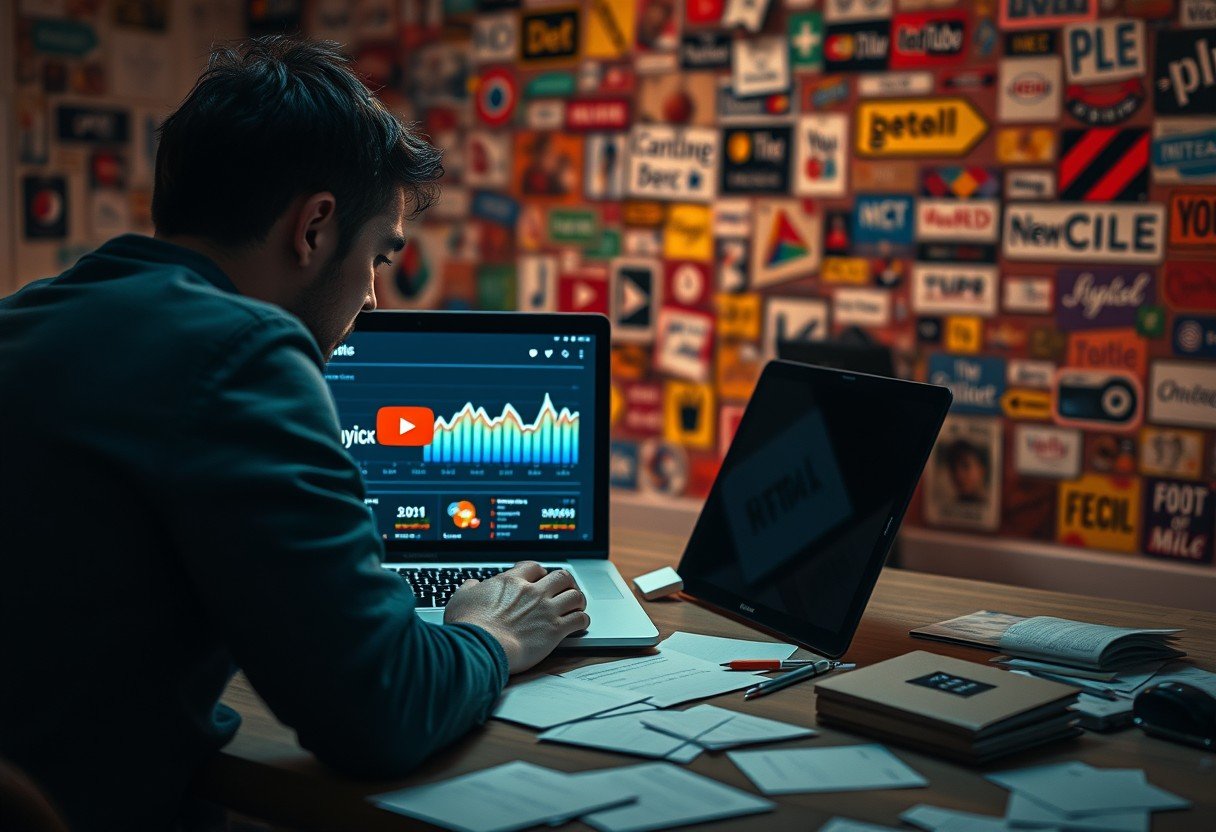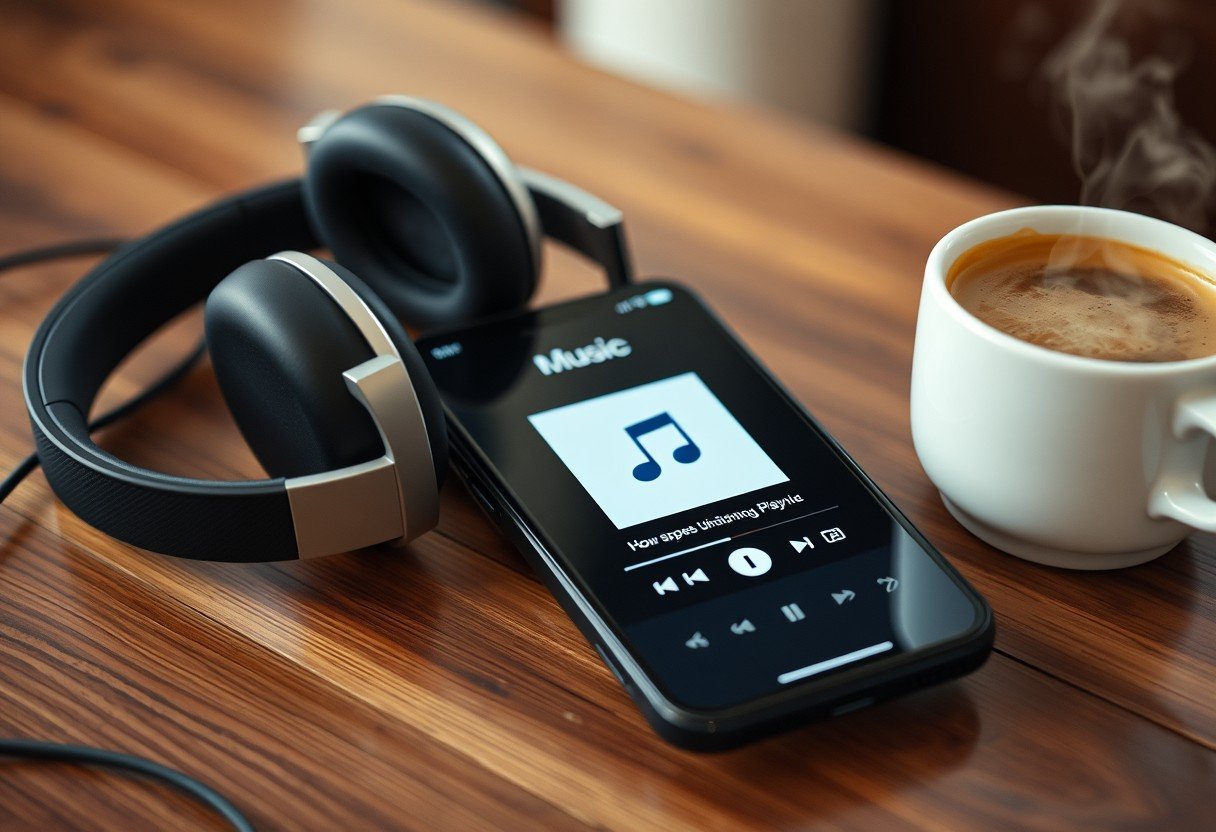Noticing a drop in your YouTube views can be frustrating, especially when you’re putting in the effort. This often happens due to a mix of factors, from changes in the YouTube algorithm to shifts in what your audience wants to watch. Understanding why your views are declining is the first step to fixing the problem. This guide will walk you through the common reasons for losing views and give you clear, actionable steps to win back your audience and grow your channel.
Understanding the YouTube Algorithm
The YouTube algorithm is a complex system that decides which videos get shown to viewers. It’s not a single thing but a collection of processes designed to find the right video for the right viewer at the right time. When your views drop, it’s often because your videos aren’t aligning with what the algorithm is currently prioritizing.
The algorithm’s main goal is to keep people on the platform for as long as possible. It does this by recommending videos that viewers are likely to watch and enjoy. It looks at a user’s watch history, what they’ve liked, and what’s popular to make these recommendations on the homepage, in search results, and in the “Up Next” sidebar.
Several key signals tell the algorithm whether your video is worth promoting. Understanding these can help you tailor your content strategy effectively.
- Click-Through Rate (CTR): The percentage of people who click on your video after seeing its thumbnail.
- Watch Time and Audience Retention: How long people watch your video, both in total minutes and as a percentage of the video’s length.
- Engagement: Likes, comments, shares, and how many people subscribe after watching.
If these metrics are low, YouTube will be less likely to show your video to new audiences, causing a drop in views over time.
The Importance of Content Quality and Engagement
Even with perfect SEO, a video will fail if the quality is poor. Viewers have high expectations, and if your content has bad audio, blurry visuals, or a boring narrative, they will click away quickly. This signals to YouTube that your video isn’t satisfying, which hurts its performance.
High-quality production shows you respect your audience’s time. This doesn’t mean you need a Hollywood budget. It means having clear audio, stable and well-lit video, and clean editing. Small improvements in production value can lead to significant increases in viewer retention and overall satisfaction.
Engagement is how you build a community, not just an audience. A video should feel like a two-way conversation. Ask questions, encourage viewers to share their opinions in the comments, and respond to them. When viewers feel connected to you and your channel, they are more likely to become loyal subscribers who watch every new upload.
Why Audience Retention Matters More Than You Think
Many creators focus on getting the initial click, but what happens after that is far more important. Audience retention—the percentage of your video that people watch—is one of the most powerful ranking factors on YouTube. A high retention rate tells the algorithm that your content is engaging and valuable.
If you see a big drop-off in the first 15-30 seconds of your videos, your intro may not be effective. You need to hook the viewer immediately by telling them what the video is about and why they should stick around. Avoid long, generic intros and get straight to the point.
Use YouTube Analytics to see exactly where viewers are dropping off. This data is incredibly valuable. If you notice a pattern of viewers leaving at a certain point, you can analyze that section to understand what went wrong. Perhaps the energy dropped, the topic became confusing, or a visual was uninteresting. Learning from these drop-off points is key to making better videos in the future.
Smart Promotion Strategies to Boost Your Reach
Uploading a video is only half the battle. If you’re not actively promoting your content, you’re relying entirely on the algorithm to find your audience. A solid marketing strategy can give your videos the initial push they need to gain momentum.
Share your videos on other social media platforms where you have a presence, like Twitter, Instagram, or Facebook. Don’t just post the link; create a custom message or a short clip tailored to that platform to entice your followers to click through. This drives external traffic to your video, which is a positive signal to YouTube.
Collaborating with other creators in your niche is one of the fastest ways to reach a new, relevant audience. A collaboration exposes your channel to viewers who are already interested in your type of content. This can result in a significant boost in both views and subscribers. Look for channels of a similar size and propose a project where you can both benefit.
Keeping Up with Competition and Niche Trends
The YouTube landscape is always changing. New creators enter your niche, and popular trends come and go. If your content becomes stale or you ignore what competitors are doing, your audience may look elsewhere for fresh content.
Regularly analyzing your competition is not about copying them; it’s about understanding what is working in your niche. Look at their most popular videos. What topics are they covering? What kind of thumbnails and titles are they using? This information can inspire new ideas and help you identify gaps in the market that you can fill.
Here is a simple way to track what your competitors are doing:
| Analysis Point | What to Look For | How It Helps You |
|---|---|---|
| Video Topics | Recurring themes or series that perform well. | Identifies viewer interests and potential video ideas. |
| Thumbnails & Titles | Common styles, colors, and title formats. | Helps you create more clickable content. |
| Audience Engagement | Comment sentiment and popular viewer suggestions. | Reveals what the audience wants to see next. |
Staying on top of trends is also crucial. Use tools like Google Trends and monitor social media to see what topics are gaining popularity. Creating timely content around a trending subject can attract a wave of new viewers to your channel.
Adapting to Changes in Viewer Behavior
Your audience’s interests are not static. What they loved watching six months ago might not be what they want to see today. Seasonal trends also play a big role. For example, fitness content might see a spike in January, while travel content may perform better in the summer.
Pay attention to your subscriber activity. If you notice that your loyal viewers are not engaging with a certain type of video, it might be a sign to pivot your content strategy. Don’t be afraid to experiment with new formats or topics. Polling your audience through the YouTube Community tab is a great way to ask them directly what they want to see from you.
Consider the lifecycle of your content. Some topics are evergreen, meaning they will be relevant for years, while others are tied to a specific trend that will eventually fade. A healthy channel has a good mix of both. If your views are dropping, it might be because you’ve focused too much on temporary trends.
How to Revive Your Older Videos
Just because a video is old doesn’t mean it can’t get views. You can breathe new life into your back catalog with a few simple strategies. This can create a new stream of views for your channel without requiring you to produce brand new content.
One of the most effective methods is to update the metadata. Your video’s title, description, and tags might be outdated. Research current keywords related to the video’s topic and refresh them. You can also create a new, more compelling thumbnail to improve its click-through rate.
Promote your older videos within your new content. Here are a few ways to do that:
- Use End Screens and Cards: Add links to relevant older videos at the end of your new uploads or as pop-up cards during the video.
- Create Playlists: Group related videos into a playlist. If a viewer enjoys one video, they are likely to let the playlist continue, boosting watch time across your channel.
- Mention Them in New Videos: If you’re discussing a topic you’ve covered in more detail before, mention it and tell viewers they can find a link to the older video in the description.
Frequently Asked Questions
Why do my YouTube views drop after a few days?
It’s normal for a video to get most of its views in the first 24-48 hours after being published. Views naturally taper off as the video ages and is shown to fewer people on their homepages. The key is to create evergreen content that can continue to get views from search over time.
Could YouTube’s algorithm be penalizing my channel?
YouTube’s algorithm doesn’t “penalize” channels, but it does prioritize content that performs well. If your videos have low click-through rates or poor audience retention, the algorithm will simply be less likely to recommend them to viewers, leading to a drop in visibility.
How important are thumbnails and titles for getting views?
They are extremely important. Your thumbnail and title are the first things a viewer sees, and they are the primary factors in their decision to click on your video. A compelling thumbnail and an intriguing title can significantly increase your click-through rate, which boosts your video’s performance.
Should I make my videos shorter to improve retention?
Not necessarily. The ideal video length depends on your topic and audience. Instead of aiming for a specific length, focus on making every minute of your video valuable and engaging. A well-paced 20-minute video can have better retention than a rushed 5-minute video if the content is compelling.
Can buying views help my channel grow?
No, buying views is a bad idea. It violates YouTube’s terms of service and can get your channel terminated. These fake views also destroy your analytics, as they provide no real watch time or engagement, which tells the algorithm your content is not interesting to real viewers.
How often should I upload new videos to keep views up?
Consistency is more important than frequency. Whether you upload daily, weekly, or bi-weekly, stick to a schedule your audience can rely on. A consistent schedule keeps your subscribers engaged and signals to YouTube that your channel is active.







Leave a Comment